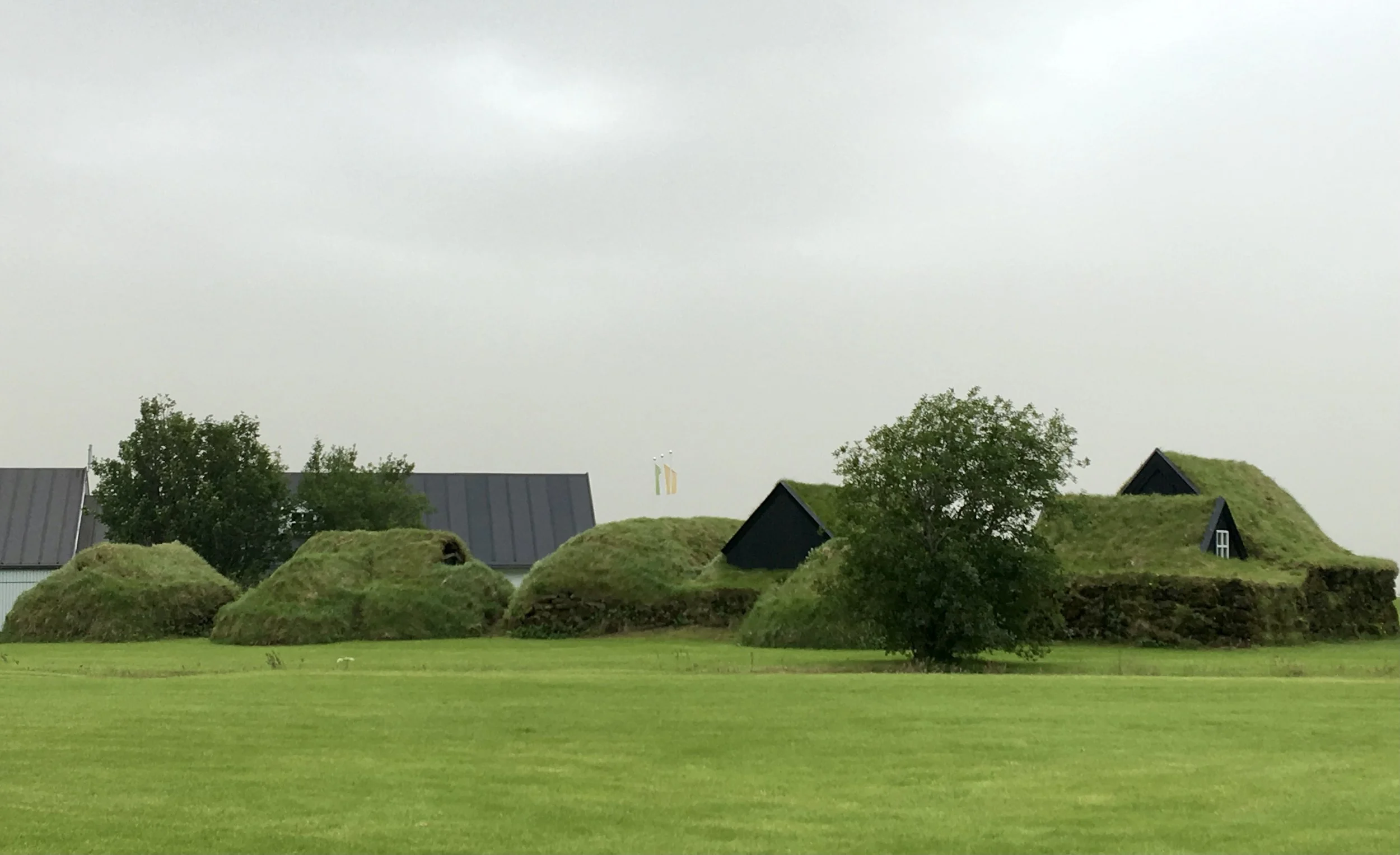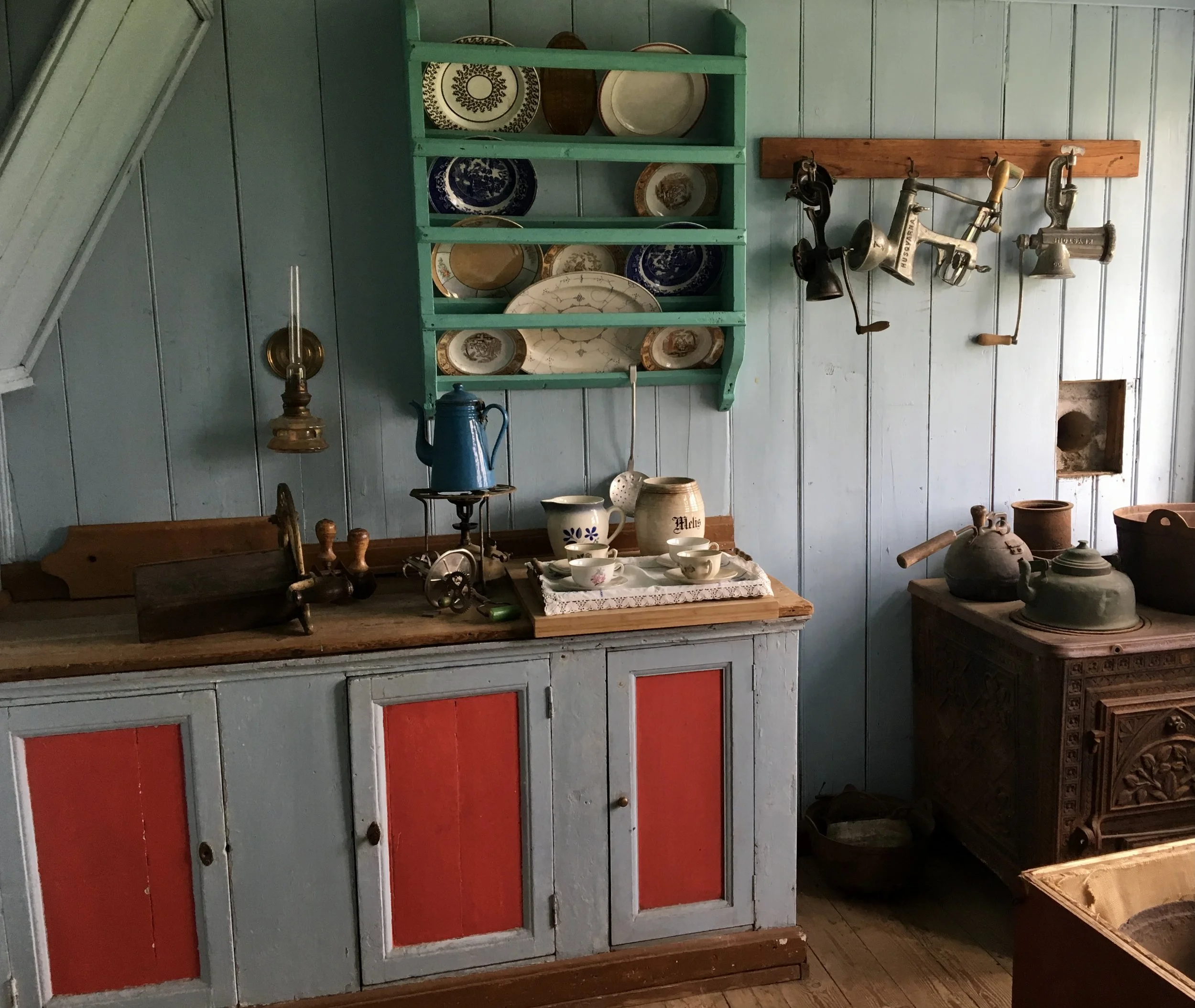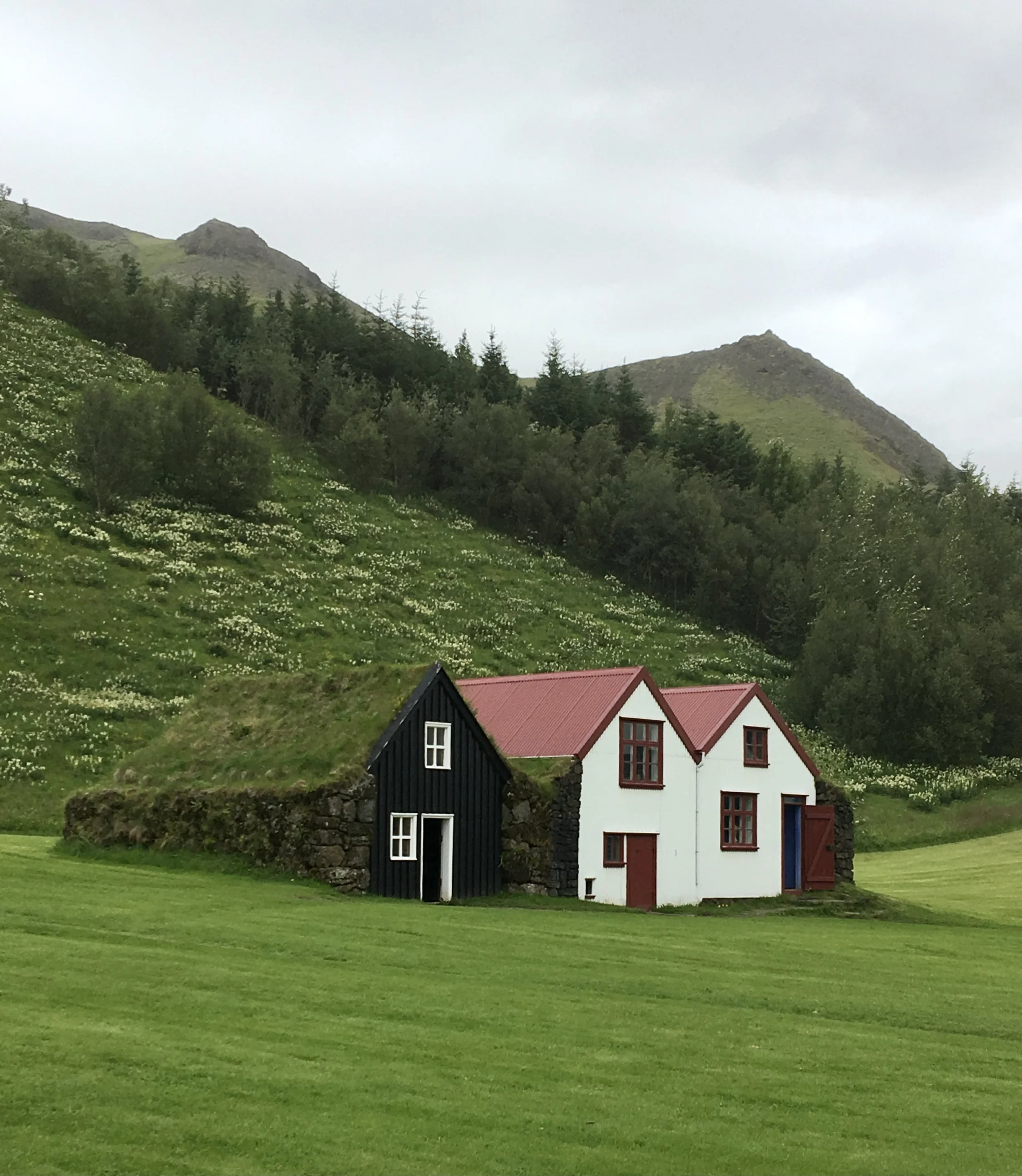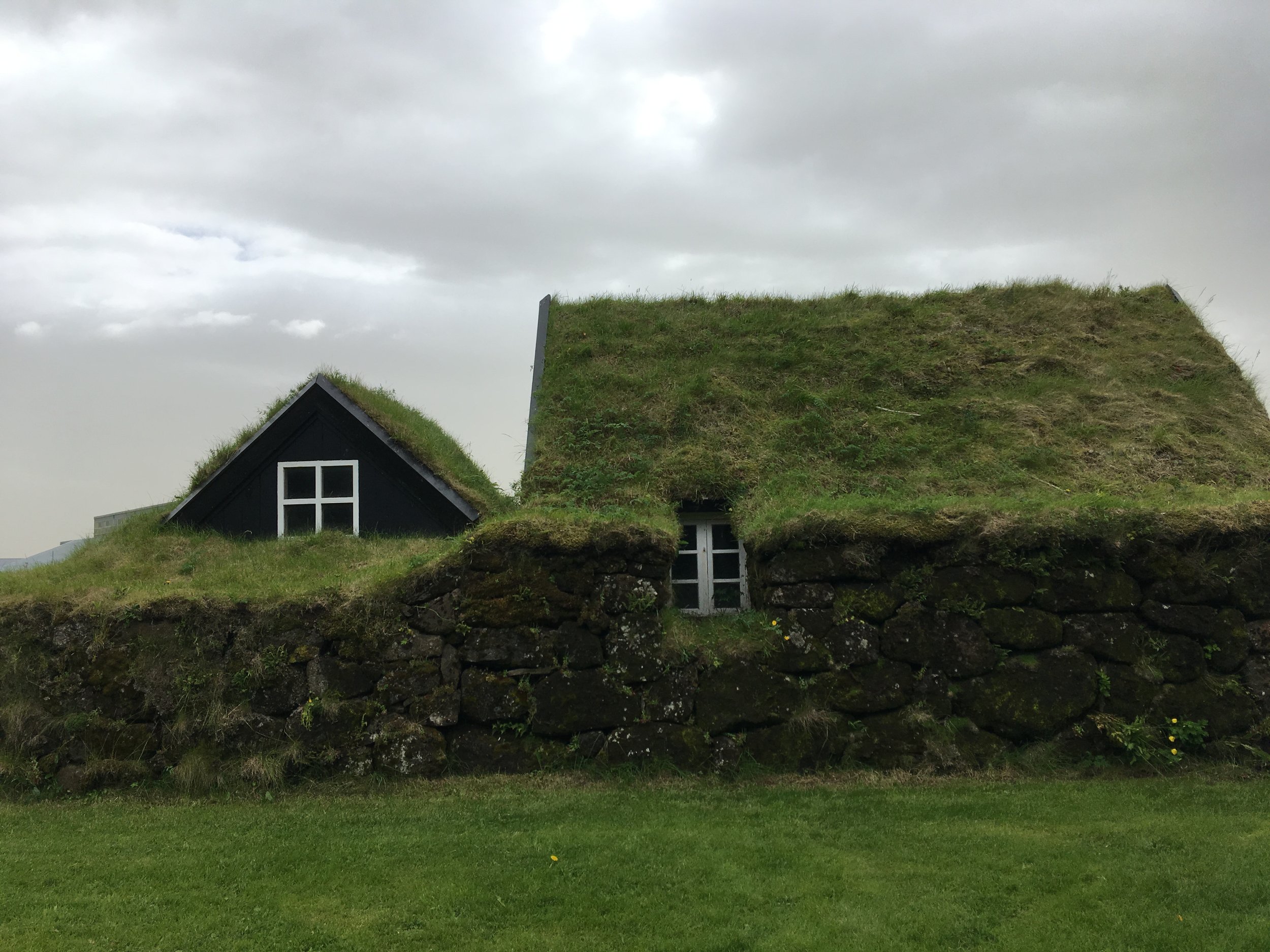Architecture: Icelandic Turf Houses
Written by Clara Pysh
The turf house is a fundamental part of Icelandic history. These houses first began appearing on the island during the ninth century when the Vikings landed there. The Vikings brought with them the idea of the “longhouse,” a large rectangular building constructed to contain all the necessities for living in one space, i.e. cooking, sleeping and eating.
For better insulation, the turf houses were built partially underground and covered in turf. Constructing them partially underground and covering them up provided the houses extra layers of protection from the harsh weather conditions of the island, especially in the winter. Fires were also used to heat the inside of each house during the winter before the introduction of the wood burning stove, which came in the nineteenth century.
These houses were all constructed from locally gathered and sourced materials on the Nordic island. The foundations were cut from volcanic rock, the exteriors were made from turf and grass, and the interiors were constructed either from volcanic stone, or dug straight into the ground and built up with timber. Many of the turf houses’ interiors were made of timber, although timber was a difficult resource to obtain. Iceland contains
many native birch trees, while the Vikings who arrived there were more accustomed to oak trees and more familiar with building with oak wood than with birch wood. And so, birch houses quickly became a symbol of status in Iceland, and showed that the houses’ inhabitants had the ability to trade goods with other people.
The interiors of turf houses were constructed from timber and stone, and had divisions within made of light timber walls. But the exteriors were completely covered in turf. These grass and earthen houses created a healthier living space for those inside because these are living materials and natural filters of pollution. The grass on the outside of turf houses had to be taken care of regularly and was trimmed from time to time when it grew too long.
The knowledge, craftsmanship, and the trade of building these houses was passed down through generations of Icelandic farmers from the eighteenth until the twentieth century. Villages started to form in Iceland in the eighteenth century, as the country was predominantly rural until the late twentieth century.
Constructing homes from turf is a method that has been used in many different countries, such as Norway, Scotland, Ireland, the Faroe Islands, Greenland, other parts of northern Europe, and even in the Great Plains region of the United States. Even in more recent history, turf houses were constructed as dwellings for the poorer, lower classes. However, in Iceland this technique for homebuilding was used for all types of structures, from homes to stables to churches, and by all classes of people. Today, turf houses in Iceland are a tourist attraction, with no one living in them anymore. But those that still stand are preserving an important piece of Iceland’s architectural history.
Learn more about turf houses at Iceland Travel and Guide to Iceland.














